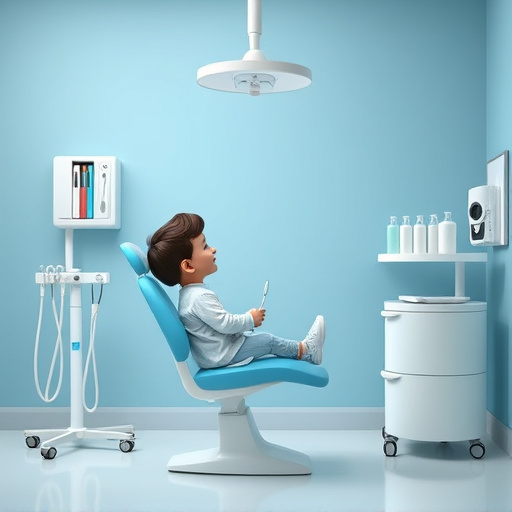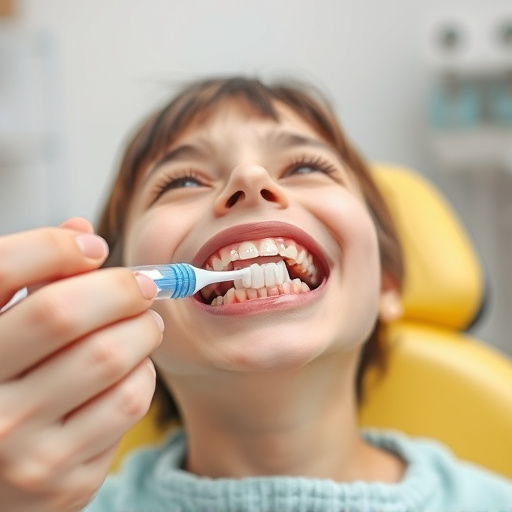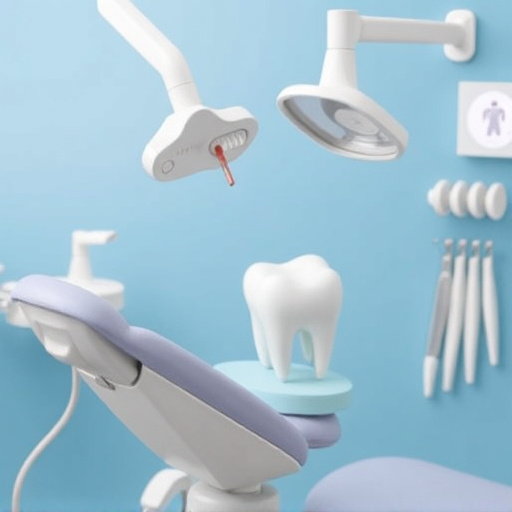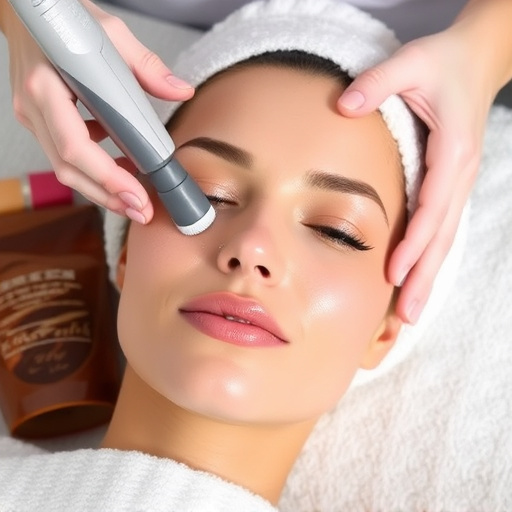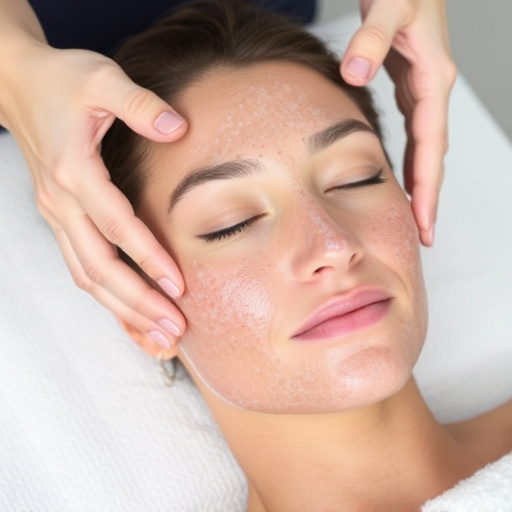Hormones, especially androgens like testosterone, play a key role in leg hair growth, affecting the effectiveness of laser hair removal treatments. Skincare professionals tailor these procedures based on hormonal profiles, combining laser therapy with hormone-regulating treatments for better results. By considering menstrual cycles, hormonal imbalances, and personalized skincare routines, individuals can achieve smoother, hair-free legs for longer periods, with potential wrinkle reduction benefits.
Hormones play a surprising role in shaping the success of leg laser hair removal treatments. Understanding their intricate relationship with hair growth is key to unlocking optimal results. This article delves into how hormonal fluctuations can impact the effectiveness of laser therapy, offering valuable insights for anyone considering leg laser hair removal. By exploring effective strategies based on hormone levels, readers can enhance their treatment outcomes and achieve smoother, longer-lasting results.
- Understanding Hormones and Their Role in Hair Growth
- The Impact of Hormonal Fluctuations on Laser Hair Removal Effectiveness
- Strategies to Optimize Leg Laser Hair Removal Results Based on Hormone Levels
Understanding Hormones and Their Role in Hair Growth
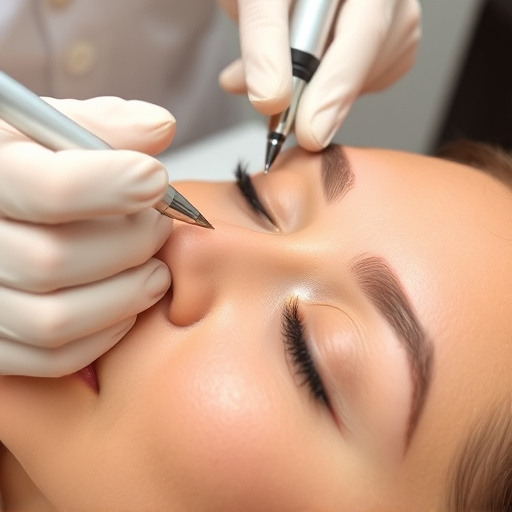
Hormones play a pivotal role in regulating various bodily functions, including hair growth. Understanding this intricate relationship is essential when considering leg laser hair removal treatments. Androgens, such as testosterone, are key hormones that stimulate hair follicles to grow. In women, these hormones contribute to unwanted leg hair, and targeting them during laser procedures can lead to more effective results.
During the laser treatment process, professional skincare experts often consider hormonal factors to tailor the procedure accordingly. For instance, for individuals with higher androgen levels, a combination of targeted laser therapy and certain treatments to regulate hormones might be recommended. This approach not only addresses the visible hair but also provides long-term solutions, reducing the need for frequent repeat sessions of leg laser hair removal and enhancing overall skin smoothness, including potential wrinkle reduction benefits.
The Impact of Hormonal Fluctuations on Laser Hair Removal Effectiveness
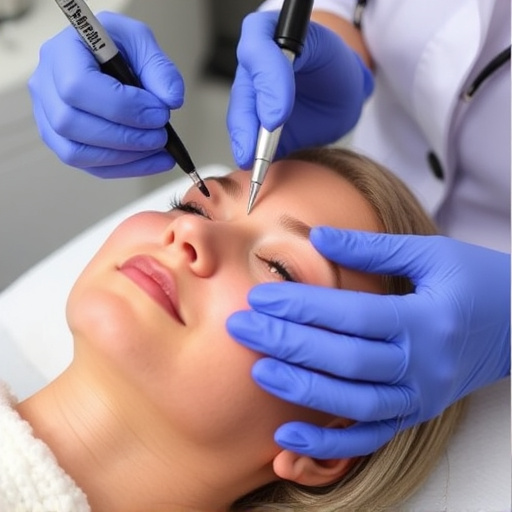
Hormonal fluctuations can significantly impact the effectiveness of leg laser hair removal treatments. The skin’s response to laser energy is influenced by the complex interplay of various hormones, particularly those related to reproductive and metabolic functions. During certain phases of a woman’s menstrual cycle or in individuals with hormonal imbalances, the skin’s sensitivity and pigment distribution may change. This can affect how the laser targets and breaks down hair follicles, potentially leading to less consistent results.
Personalized skincare approaches that consider these hormonal variations can optimize leg laser hair removal outcomes. Customizing treatments based on individual hormone levels and skin health can enhance overall effectiveness. Additionally, addressing underlying hormonal imbalances through medical advice for conditions like polycystic ovary syndrome (PCOS) or thyroid disorders may complement laser procedures, ensuring better long-term management of unwanted hair growth.
Strategies to Optimize Leg Laser Hair Removal Results Based on Hormone Levels
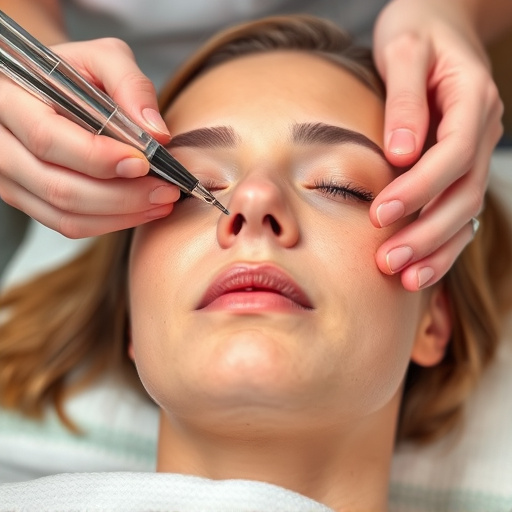
Optimizing leg laser hair removal results can be achieved through tailored strategies that consider individual hormone levels. Since hormones play a significant role in hair growth and distribution, understanding their impact is key to enhancing treatment outcomes. For instance, individuals with higher androgen levels may experience more effective results from laser treatments, as androgens are known to stimulate hair follicles. Therefore, a professional skincare specialist might recommend adjusting diet and lifestyle factors that influence hormone production for optimal leg laser hair removal.
Personalized skincare routines can significantly contribute to the success of laser hair removal. This includes incorporating products that target hormonal imbalances or excessive androgen activity. Regular exercise and a balanced diet are also crucial components of personalized skincare, as they help regulate hormones and support overall body contouring. By combining these strategies with professional guidance, individuals can maximize the benefits of leg laser hair removal treatments, achieving smoother, hair-free legs for longer periods.
Hormones play a significant role in hair growth and can greatly impact the effectiveness of leg laser hair removal. By understanding these fluctuations, individuals can optimize their treatment outcomes. With the right strategies, such as timing procedures during specific hormone levels or considering hormonal balance, folks can achieve smoother legs for longer periods. Remember that, in terms of leg laser hair removal, navigating hormone dynamics is key to a successful and lasting result.
